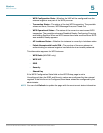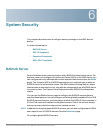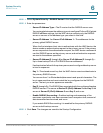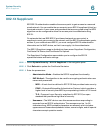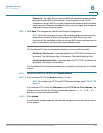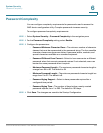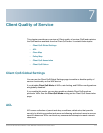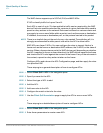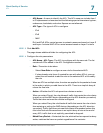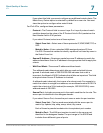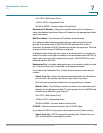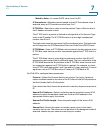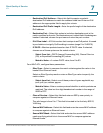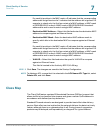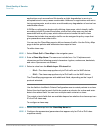
Client Quality of Service
ACL
Cisco Small Business WAP551 and WAP561 Wireless-N Access Point 112
7
The WAP device supports up to 50 IPv4, IPv6, and MAC ACLs.
IP ACLs classify traffic for Layers 3 and 4.
Each ACL is a set of up to 10 rules applied to traffic sent or received by the WAP
device. Each rule specifies whether the contents of a given field should be used to
permit or deny access to the network. Rules can be based on various criteria and
may apply to one or more fields within a packet, such as the source or destination
IP address, the source or destination port, or the protocol carried in the packet.
NOTE There is an implicit deny at the end of every rule created. To avoid deny all, it is
strongly recommended to add a permit rule within the ACL to allow traffic.
MAC ACLs are Layer 2 ACLs. You can configure the rules to inspect fields of a
frame such as the source or destination MAC address, the VLAN ID, or the class of
service. When a frame enters or exits the WAP device port (depending on whether
the ACL is applied in the up or down direction), the WAP device inspects the frame
and checks the ACL rules against the content of the frame. If any of the rules match
the content, a permit or deny action is taken on the frame.
Configure ACLs and rules on the ACL Configuration page, and then apply the rules
to a specified VAP.
These steps give a general description of how to configure ACLs:
STEP 1 Select Client QoS > ACL in the navigation pane.
STEP 2 Specify a name for the ACL.
STEP 3 Select the type of ACL to add.
STEP 4 Add the ACL.
STEP 5 Add new rules to the ACL.
STEP 6 Configure the match criteria for the rules.
STEP 7 Use the Client QoS Association page to apply the ACL to one or more VAPs.
These steps give a detailed description of how to configure ACLs:
STEP 1 Select Client QoS > ACL in the navigation pane.
STEP 2 Enter these parameters to create a new ACL:



